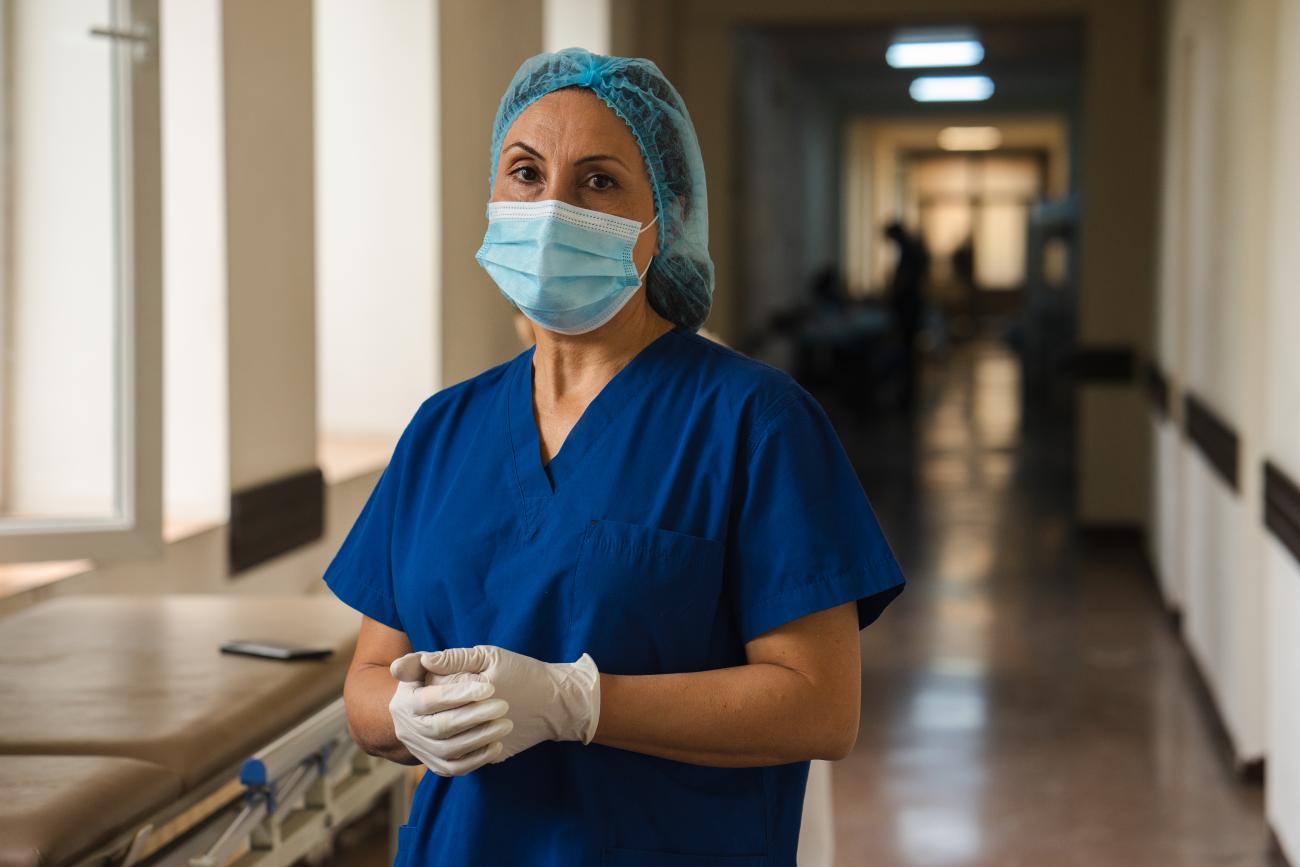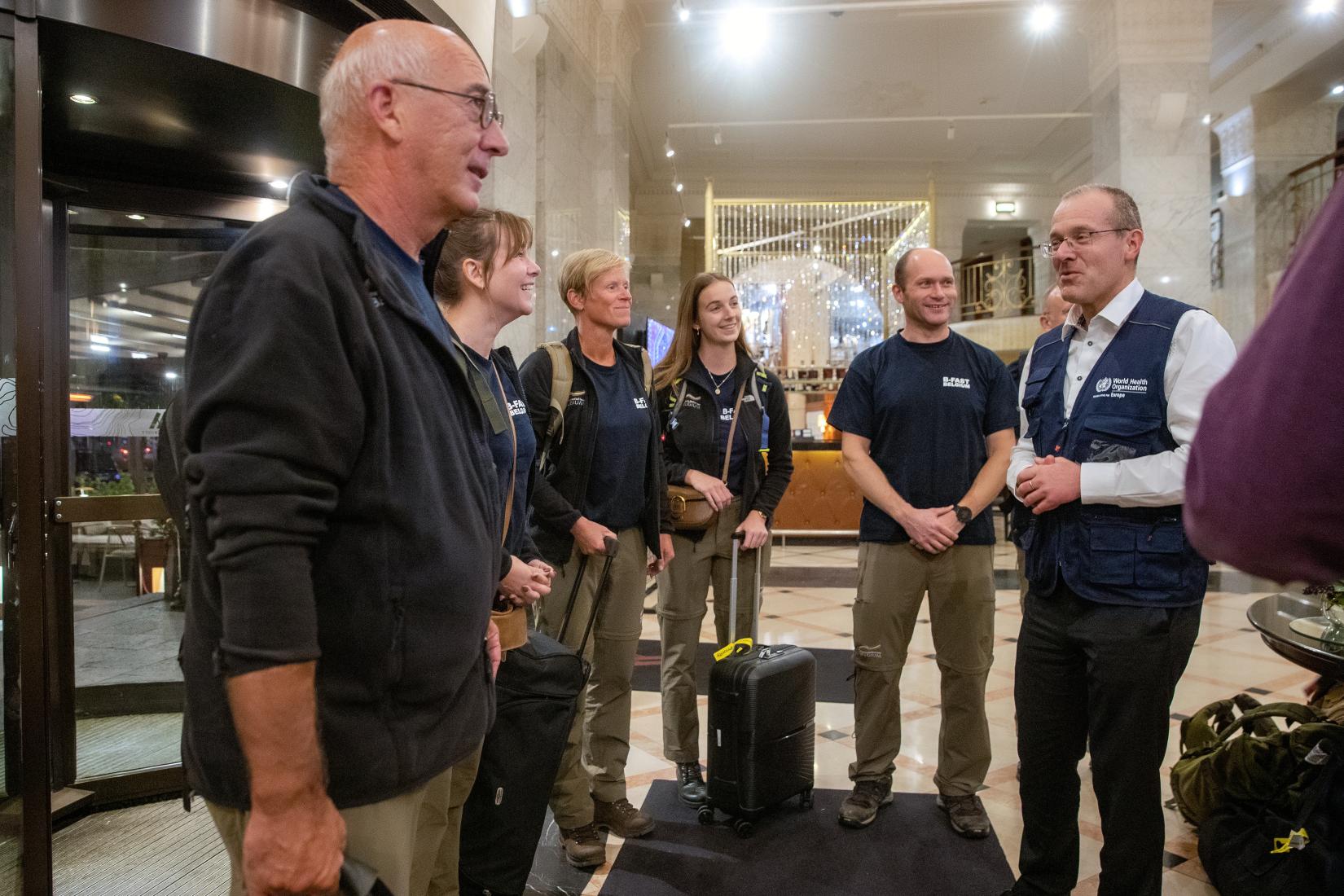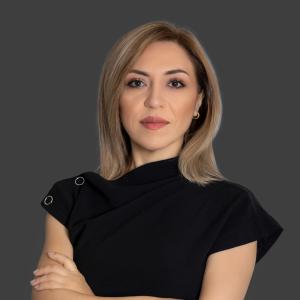"The situation is critical.” Emergency Medical Teams (EMTs) caring for severely burned refugees shoulder to shoulder with Armenian doctors

To support the ongoing care of burns survivors, WHO/Europe activated an Emergency Medical Teams Coordination Cell.
On Monday 25 September, as thousands of refugees were moving towards Armenia, a powerful explosion at a fuel storage depot killed more than 200 people and seriously injured more than 300. To support the ongoing care of burns survivors, WHO/Europe activated an Emergency Medical Teams Coordination Cell (EMTCC) under the leadership of the Ministry of Health of Armenia. Care teams specializing in burns management from several countries were quick to arrive and have been working alongside Armenian medical staff to care for the exceptionally high number of burns patients, from the early treatment stages through to rehabilitation.
The Israeli EMT
An Israeli EMT was first on the ground after the explosion and stayed for almost 2 weeks. Dr Shai Schul, Team Lead for the 14-person Israeli EMT said, at the time, “The team is made up of plastic surgeons, an anaesthesiologist, nurses and specialists in pain management. We are working in four different operating rooms.”
The care professionals supported Armenian medical teams to care for around 250 people, some of whom had received serious burns on 70–90% of their bodies.
“When the explosion happened, many people instinctively protected their faces by covering them with their hands, which were then badly burned. Others dropped to their knees and tried to crawl away, which led to burns to the legs,” explained Dr Schul.
A few of the patients were children.
“We operated on a 1-year-old baby with burns. He didn’t have burns on his face because his mother or father covered his head. All the burns were on his back and on his leg. He was protected by his parents.”
Dr Schul described how his team worked day and night in the operating rooms, shoulder to shoulder with the Armenian team, learning from each other.
“This team is used to treating burns; this is their day job. But in the largest hospital in Jerusalem, for example, they will see 1 case a week, 2 cases a week. Here they have case after case after case. They are doing 20 operations a day,” he said.
B-FAST, an EMT from Belgium
Bert Torfs, Team Lead of the B-FAST Medevac team from Belgium was also shocked by the scale of the injuries.
“In normal circumstances in Belgium, doctors see 1 of these severely burned people once a month. But here you see 200 of those patients at once. The Ministry of Health of Armenia and all the medical staff are doing a great job with the means they have, but this is really stretching their limits and it would be stretching the limits of many countries, including Belgium.”
His team was specifically tasked with the evacuation of patients. In addition to burns specialists and other medical staff, their management team ensured that each step of the complex evacuation process flowed smoothly, both medically and logistically.
“When they arrive at the airfield in Brussels there will be an ambulance waiting for them. The people in the ambulance will have been briefed by our experts here so that when the patients come out of the aeroplane, doctors already know who they are and what their situation is. They will then take them to the burns centre,” Bert explained.
Under the European Union Civil Protection Mechanism, Bulgaria, Italy, Romania and Spain supported further medical evacuations.
The Italian Medical Team in Armenia
The ITA Medical Team of the Italian Department of Civil Protection organized the deployment of a specialist burns team at the request of the Armenian Government. The 6-strong team of professionals are currently working with 23 injured people at the Yerevan Medical Centre – of which 5 are in intensive care.
The team works jointly with the plastic surgeons and anaesthetists at the hospital, making assessments and operating together.
“Collaboration with the local medical team is fundamental,” said Gabriella Proietti, who leads the Italian Medical Team. “Planning surgical activities according to the available resources is essential for success. Together we can target priorities and schedule subsequent activities. One example is the necessity to start by skin grafting hands versus lower limbs, so that when healing occurs the patient can become independent and start to eat, enhancing his or her recovery.”
When the specialist team left at the end of October, skilled local doctors took over the complex process of burns reconstruction.
“The surgeons in Armenia are very capable, but the situation is critical due to the huge number of patients that has impacted on resources,” Gabriella Proietti added.
Samaritan’s Purse EMT
Additionally, Samaritan’s Purse brought 11 burns management experts to Armenia, working out of the National Centre for Burns and Dermatology, to build hospital capacity and provide rehabilitation services, surgery and wound dressing.
Sasha Thew led the United States-based Samaritan’s Purse team.
“Armenian doctors have been incredibly welcoming. I know they had a very hard past 10 days, so it’s been very rewarding to work alongside them. My hope for my work here is that we can really provide these patients with the best possible outcome. I also hope that we build into the capacity of the health-care system; that we really provide support to the doctors and nurses with burns expertise”.
Sasha's colleague, Jessica Burger, has been supporting the rehabilitation of burns survivors.
“Working with these patients has been an honour. Though mentally and physically challenging at times, it has been a privilege to reduce the burden on the local health-care system, as well as decrease the suffering of each individual we have been able to care for,” Jessica explained.

The United Kingdom’s UK-Med EMT
With support from the Foreign, Commonwealth and Development Office, UK-Med sent a specialist care team to contribute to the ongoing response in Armenia. A small surgical and physiotherapy team is working at Mikaelyan Hospital in Yerevan to provide surgical and rehabilitation treatment to the survivors.
WHO has worked closely with the Ministry of Health of Armenia and the EMTs to strengthen national capacity in burns rehabilitation; UK-Med and Samaritan’s Purse were key partners in delivering a training course, entitled Emergency Medical Teams: Essential Burn Rehabilitation Training of Trainers.
“The training is a reflection of the commitment of the Ministry of Health of Armenia to continuously strengthen rehabilitation for the burns survivors. I have so enjoyed working alongside the participants of the training and witnessing the skills and compassion they are bringing to their work,” said Dr April Gamble, Rehabilitation Lead for UK-Med.
Supporting patients on the long road to recovery
After surgery is complete and patients’ burns have begun healing, they need intensive rehabilitation. Armenuhi Poghosyan is an Armenian rehabilitation therapist at the National Centre for Burns and Dermatology.
“When patients experience the benefits of rehabilitation-reduced pain, improved ease and smoothness in their movements, and comfort in their limbs, they are waiting for you and calling you,” she says.
The difficult reality is that this is just the beginning of the journey towards healing for many of those who were severely burned.
“In the case of burns injuries, rehabilitation is a lengthy process, requiring up to a year, or even longer in some cases,” Armenuhi explains.
Currently, 118 burns patients are still being cared for by medical staff in 8 hospitals in Yerevan.
WHO/Europe will continue to work with the Armenian Government on behalf of these patients, as well as strengthening the physical and mental health care of refugees and host communities as part the broader response to the refugee crisis.
WHO/Europe is preparing an EMT action plan for 2024–2030, with input from Member States, to reinforce health systems’ emergency preparedness and resilience by integrating EMT capacities into national frameworks.
Written by




